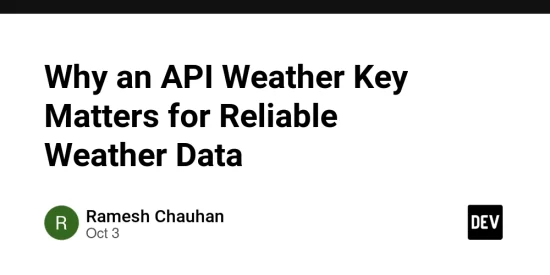Weather impacts decisions daily—whether it’s scheduling a delivery, managing agricultural work, or simply planning a trip. Developers and businesses rely on structured data from weather APIs to power their applications with forecasts, alerts, and historical climate information. A critical element in accessing these services is the api weather key, which acts as a gatekeeper to ensure both secure and organized usage.
An API key in general serves as a unique identifier assigned to a user or system, allowing them to connect with a service in a controlled way. When applied to weather data services, this key manages who can access forecasts, how many requests are made, and ensures fair usage across different users. Without it, platforms would be open to abuse, leading to unreliable data delivery and service interruptions.
For developers, working with an API weather key also provides structure. Each request made to the weather API includes this key, which validates the user’s credentials. This validation process not only authenticates but also helps the API provider manage quotas, prevent unauthorized access, and monitor performance. In this sense, the key is less about restriction and more about stability—ensuring that data flows consistently for everyone who depends on it.
Another important aspect is scalability. Applications often start small, perhaps displaying a simple forecast widget on a website. As the project grows, traffic increases and the need for accurate, high-volume data becomes critical. The API weather key plays a role here by linking access tiers to the key itself. Developers can upgrade usage limits or add additional features without rewriting their applications, since the key already ties their account to the API provider.
Beyond technical use, an API weather key also improves accountability. Logs and analytics tied to a specific key show how data is being consumed. This is valuable not only for API providers but also for developers who need to optimize their systems. By reviewing usage statistics, teams can identify peak request times, forecast demand, and streamline performance.
Security is another factor to consider. Since weather APIs are often integrated with larger platforms—such as transportation systems, logistics software, or energy management solutions—there’s a need to protect both the provider and the consumer. The key serves as a layer of protection, limiting exposure and reducing risks of unauthorized requests. Combined with HTTPS and token-based authentication, it ensures that sensitive applications remain reliable and secure.
From a user’s perspective, the presence of an API weather key is often invisible. People interacting with an app that displays temperature trends or severe weather alerts might never realize the behind-the-scenes mechanism that ensures the data is accurate and timely. Yet for developers, the key is essential—it shapes the quality of the final product.
In conclusion, while it may seem like just a string of characters, the api weather key is an important component in the broader ecosystem of weather data services. It balances security, performance, and fairness, ensuring that both developers and end-users receive consistent value from the applications they depend on.






